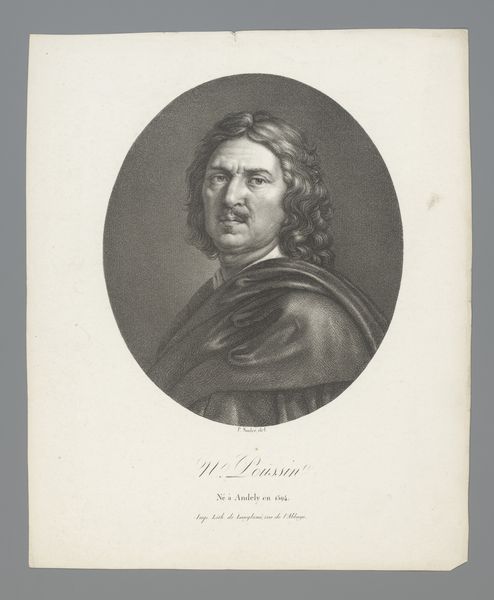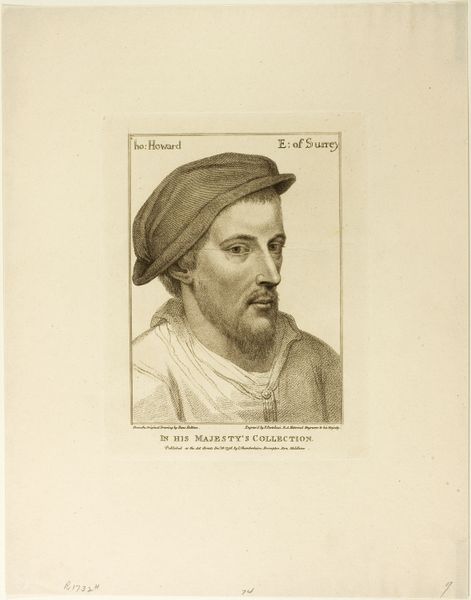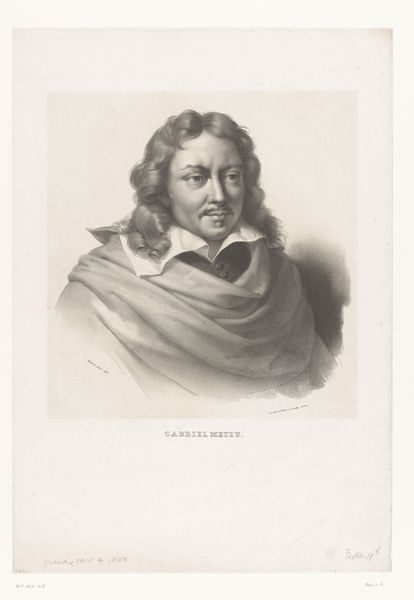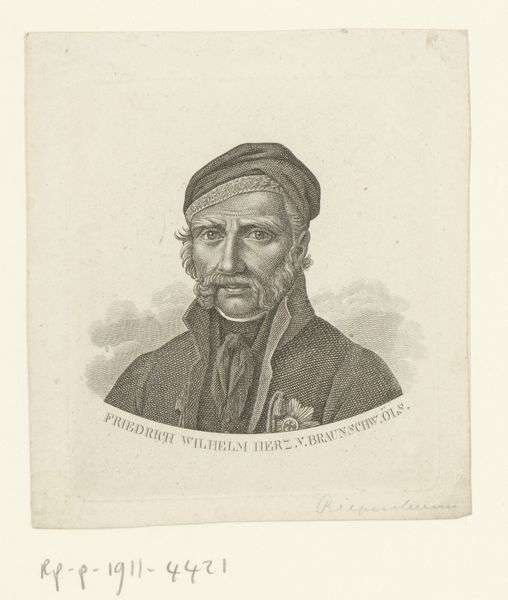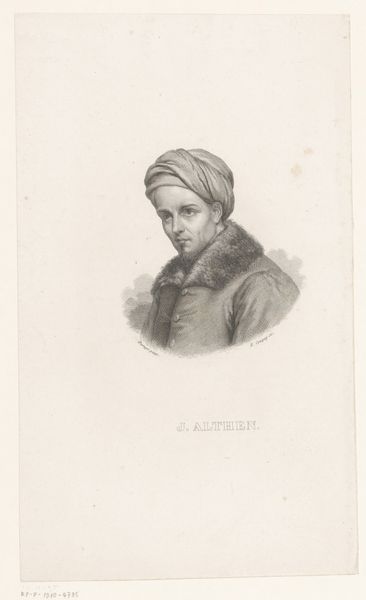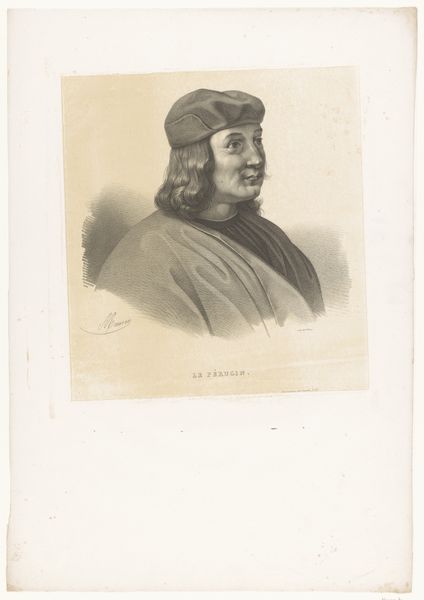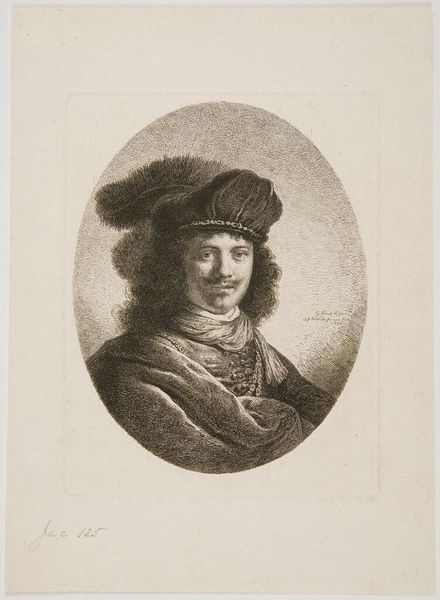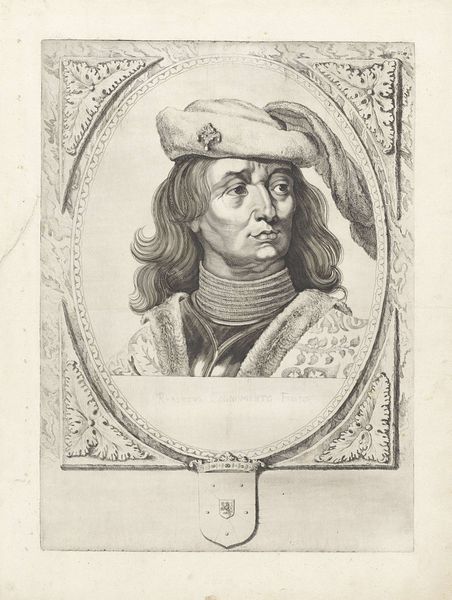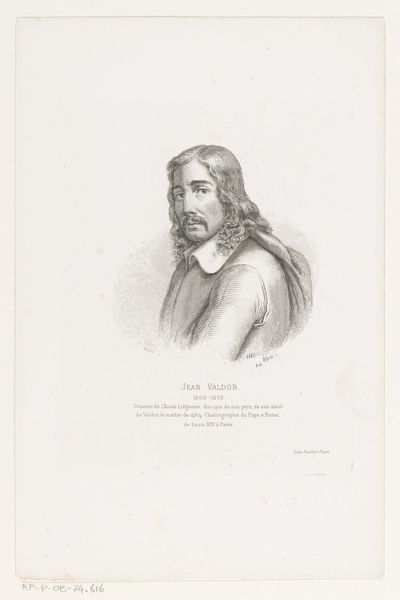
print, engraving
#
portrait
# print
#
classicism
#
history-painting
#
engraving
Dimensions: height 398 mm, width 300 mm
Copyright: Rijks Museum: Open Domain
Curator: It's striking, isn't it? Jean Joseph François Tassaert's print, "Portret van Pietro Perugino," made between 1775 and 1826. What are your first thoughts? Editor: My eye is drawn to the subtle gradations of tone—achieved, presumably, through careful manipulation of the engraving process. Look at the way the light falls on the subject’s face. I wonder about the printing press used and the labor involved. Curator: Indeed. There is a fascinating ambiguity in the gaze, thoughtful, perhaps a little melancholic? I'm immediately aware of how it evokes Perugino’s artistic legacy—his mastery influenced by the spiritual weight of religious paintings of that time. Do you see hints of the Renaissance ideals reflected in the work? Editor: It does give off classical vibes, yet there is a detachment as we grapple with it in our contemporary context. What materials would have been used to prepare the printing plate? And what kind of paper? Curator: Well, this would have likely been produced using a copper plate, treated and then meticulously engraved to create the image, using acid to deepen the lines for the ink to hold. Engraving also, of course, becomes a signifier here: it becomes more than merely technique. The act of reproduction itself mirrors the drive to preserve cultural memory. What do you make of that intention? Editor: Interesting! And here is where the material really counts! I am not sure what impact was anticipated in Tassaert's time. Still, to me, the reproducibility signals this democratization of art - I am reminded about thinking about who gets access, and who decides what legacies are important. The lines in his garments convey soft texture which, along with his gentle stare, contrasts with the unforgiving sharpness of the engraving lines. Curator: Very perceptive. Perhaps the choice of printmaking served both to idealize and humanize. And the enduring relevance underscores the human element: our continued desire to connect with the past. Editor: It has me reflecting on art’s place across eras. What stories will future artists hope to retell through their artwork about us today? Curator: Exactly. Tassaert’s engraving not only gives us Perugino, but offers an invitation for continued reflection, and reminds us of those artists in his lineage such as Raphael who have built on this foundation.
Comments
No comments
Be the first to comment and join the conversation on the ultimate creative platform.

